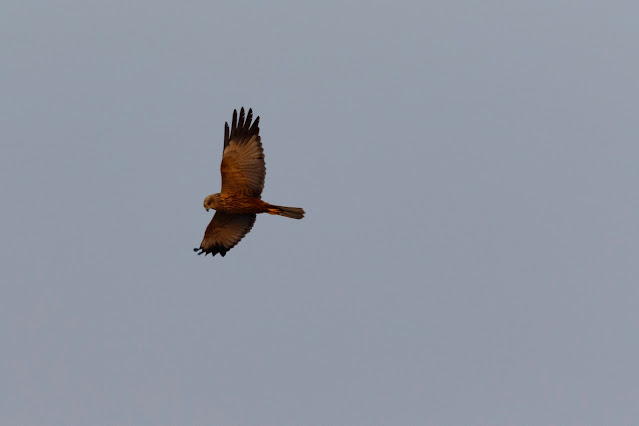We arrived back from a week away in Cornwall (and a brief visit to the Somerset Levels) yesterday evening, twitching the long-staying belted kingfisher in Lancashire on the way home. It was my first time birding in Cornwall and I really enjoyed it. The Avalon Marshes were pretty spectacular too. We saw some good species including Kumlien's gull, yellow-legged gull, firecrest, ring ouzel, chough (13 from our accommodation was the peak count), black restarts, rosy starling and black-necked grebes.
I was back on the patch before work this morning to do the WeBS Count. There was plenty to count on the Budge fields which were full of birds. Wigeon was the numerous duck species with 257 counted. I'd just finished counting what I thought was them all, when this male marsh harrier appeared over the pools and scattered everything. It was soon apparent that there were a lot more wigeon than I had originally counted, so I had to start again.
 |
| Male marsh harrier in the morning sunshine |
 |
| Looking for food |
A decent count of 35 shoveler and a single pale-bellied brent goose was on the fields before flying north.
 |
| Pale-bellied brent goose |
Avocet had been reported from the patch whilst I was away in Cornwall but there were none this morning. Five ruff, three black-tailed godwit, 31 curlew and 17 snipe were notable. There was no sign of the jack snipe that's been around for a few days.
From the little hide I picked up the water pipit that's been seen over the weekend. It had either bee bathing or walking through the frosty grass as it looked a bit bedraggled. It's starting to look a bit 'pinky' on the breast I think.
 |
| Water pipit |
 |
| Looking a bit bedraggled |
Chifchaff was the only migrant passerine 'new in' and two siskins by the Budge hide were notable for late March.

No comments:
Post a Comment